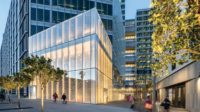Since 1988, the San Francisco chapter of the American Institute of Architects has been housed in a singularly appropriate location: Willis Polk’s Hallidie Building, a seven-story landmark in the city’s Financial District that dates back to 1918 and features one of the nation’s first curtain walls. But the office was tucked upstairs, removed from the daily life of the city below.
Now that has changed, and in an aspirational way. The chapter’s new home is a 10,000-square-foot ground-floor space in the same building, a transformation of a longtime clothing shop into a combination office, gallery, and event space that aims to connect with a much wider public than architects and design buffs.
“Our aim is a cross-pollinated, cultural, design center,” says Joshua Aidlin of Aidlin Darling Design, the firm selected for the project by AIASF in 2020. “We’d like it to be a museum to the craftspeople of the Bay Area, and an inspiration.”
The elegant clarity of what is billed as the Center for Architecture + Design sets the tone from the instant you step inside—taking a long, wide rectangle with 20-foot-high ceilings and layering it in such a way that it feels like an interlocked set of spaces to explore. A mezzanine holds the chapter’s office, reached by a broad metal stair that begins behind the concierge desk by the front door; beyond the stair, three shallow steps lead down to a small informal gathering area and an artifact of the building’s early life—an enormous steel-plated bank vault that now holds a large conference room.
At the main level, the central gallery/corridor concludes with a skylit planted wall that both softens the ambience and provides a visual hook, pulling you through the space. To the left, an alcove-like area holding a small café along the storefront window backs onto a fully enclosed lecture hall.

1
A café space with a signature custom table, chandelier, and painting by Ryan Bucko occupies the storefront area (1) in the 1918 Hallidie Building (2). Photos © Richard Barnes
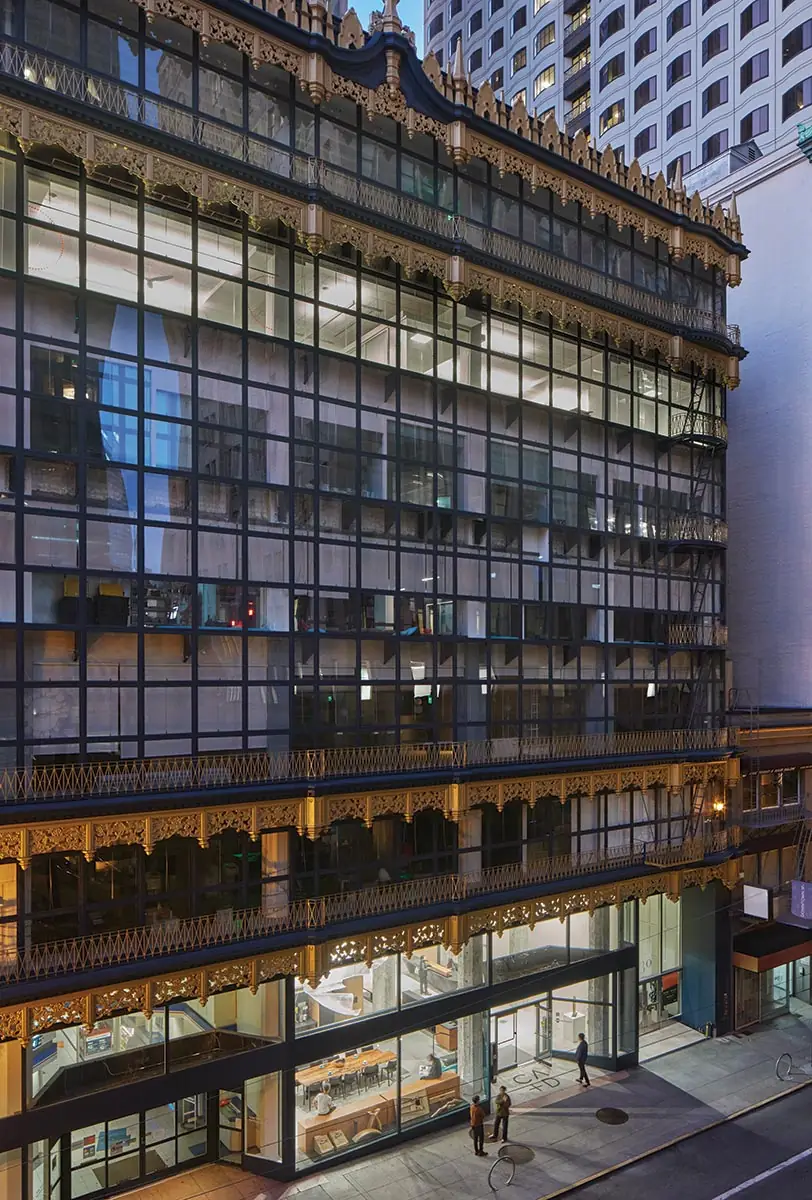
2
Amid these changes to the interior, the landmark’s historic features remain—not just the metal filigree of Polk’s curtain wall, which can be glimpsed above the tall storefront, but the brawny line of octagonal structural columns that march through the gallery below closely spaced concrete beams.
Those thick, scarred concrete elements offer a counterpoint to the refined, often bespoke interior. The latter includes the center’s most poised space, the lecture hall, with its tiered amphitheater seating that holds 110 people within tightly ribbed walls of Douglas fir. The design was worked out with the acoustic consulting firm Salter to enhance speech recognition. At once intimate and vertically expansive, it is a space intended to host everything from lectures and educational seminars to film nights.
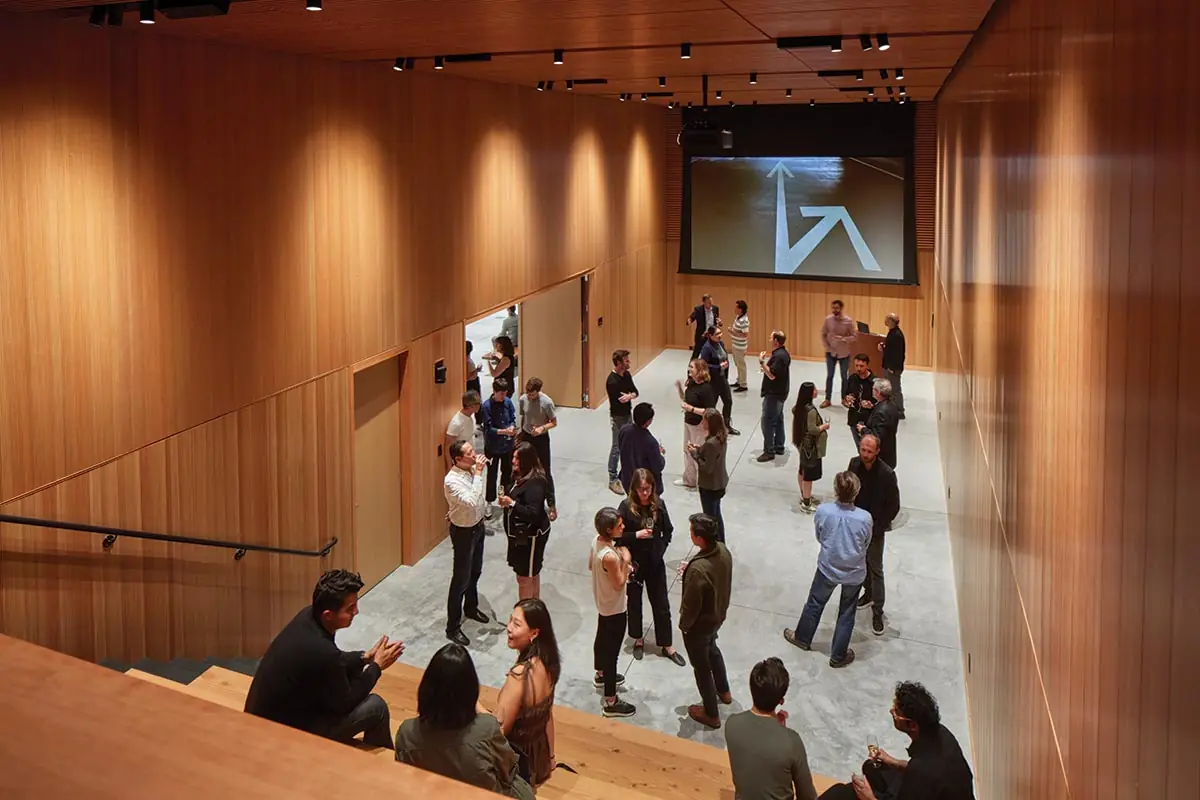
The douglas fir–lined lecture hall features built-in amphitheater-style seating. Photo © Richard Barnes
“We don’t just want to be a clubhouse for architects; we want to serve as a conduit for discussions about the issues of the moment,” said Stacy Williams, executive director of the chapter. “Design is wonderful and beautiful, but we also want to show that it is important.”
If all this seems elaborate for a chapter with a tight budget, you’re right: the deft architectural design was augmented by in-kind donations from a range of suppliers, manufacturers, and individual craftspeople. This side of the effort was handled in large part by Aidlin Darling, a San Francisco firm whose portfolio includes wineries, custom houses, and such masterful environments as the Windover Contemplative Center at Stanford University (the studio was also the 2013 recipient of the National Design Award for interior design from the Cooper Hewitt, Smithsonian Design Museum).
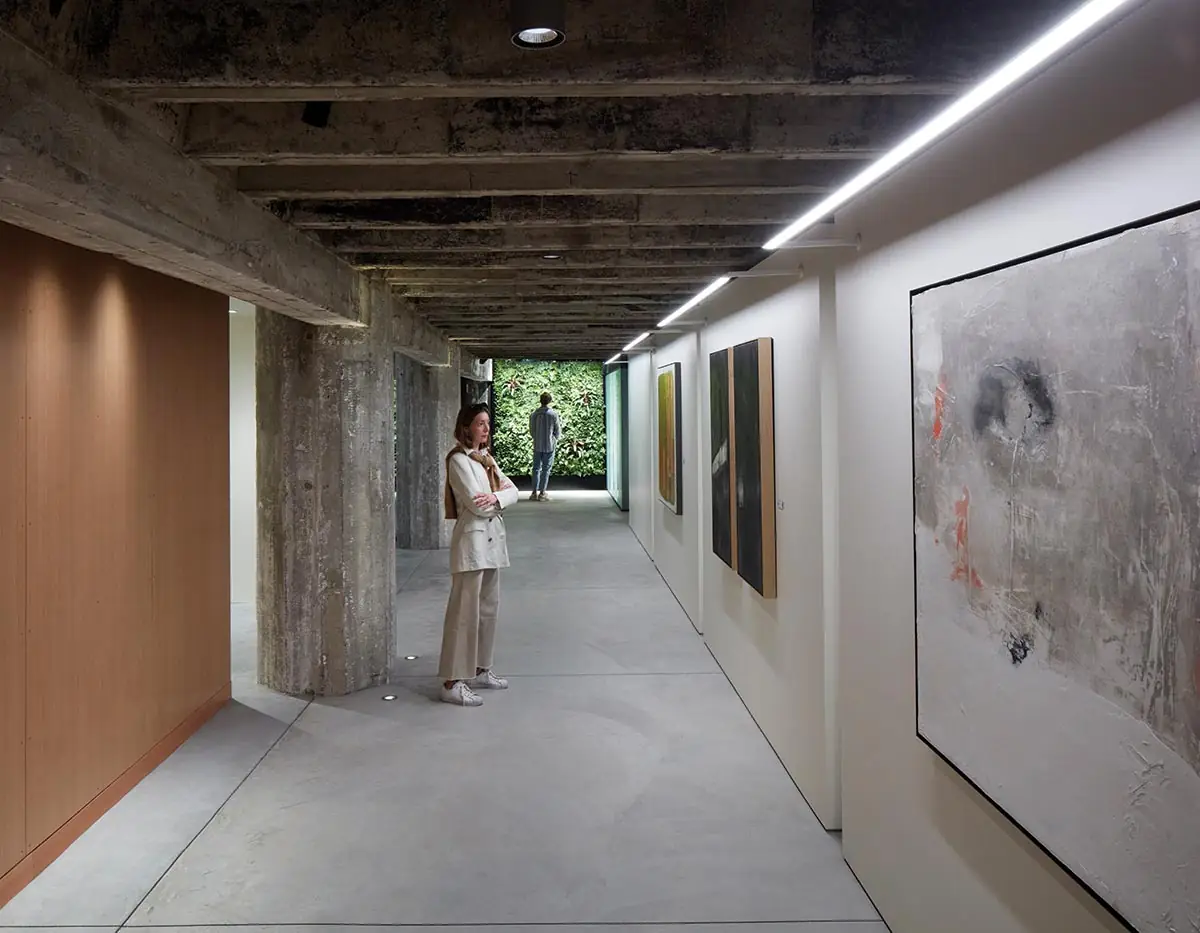
3
The main corridor/gallery, featuring works by artist Ryan Bucko, culminates in a living wall that is visible from many spaces on both levels (3 & 4). Photos © Richard Barnes
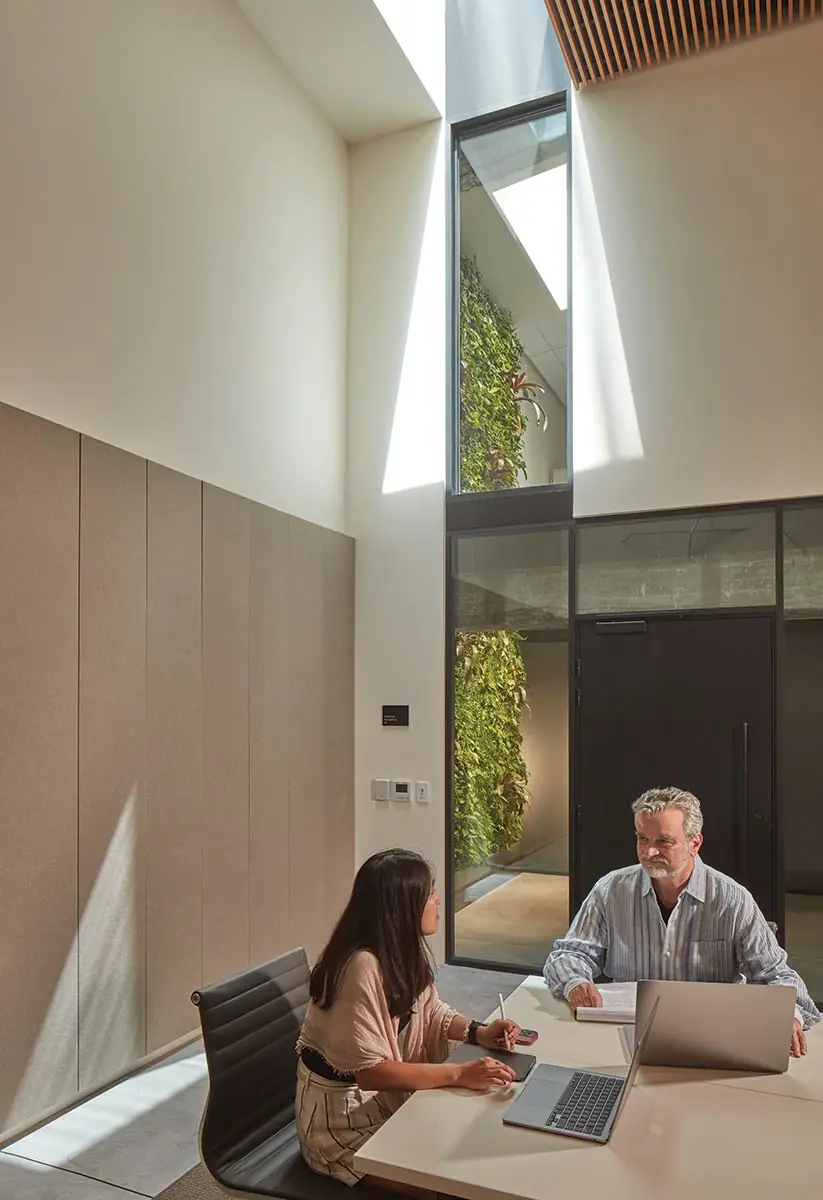
4
“I cashed in all my chits—I’ve got nothing left!” Aidlin laughed, referring to the appeals he made to contractors and collaborators from past work. “This is by far the biggest legacy project of my career.”
In spots, the artisanal add-ons clutter up aspects of the center’s clean form. One example is at the mezzanine landing, where bulbous glass lighting floats above the front counter of the AIASF office while, behind you, rows of black tube lighting hang down to illuminate the ground-floor gallery. Separately, they’re cool. Together, they clash.
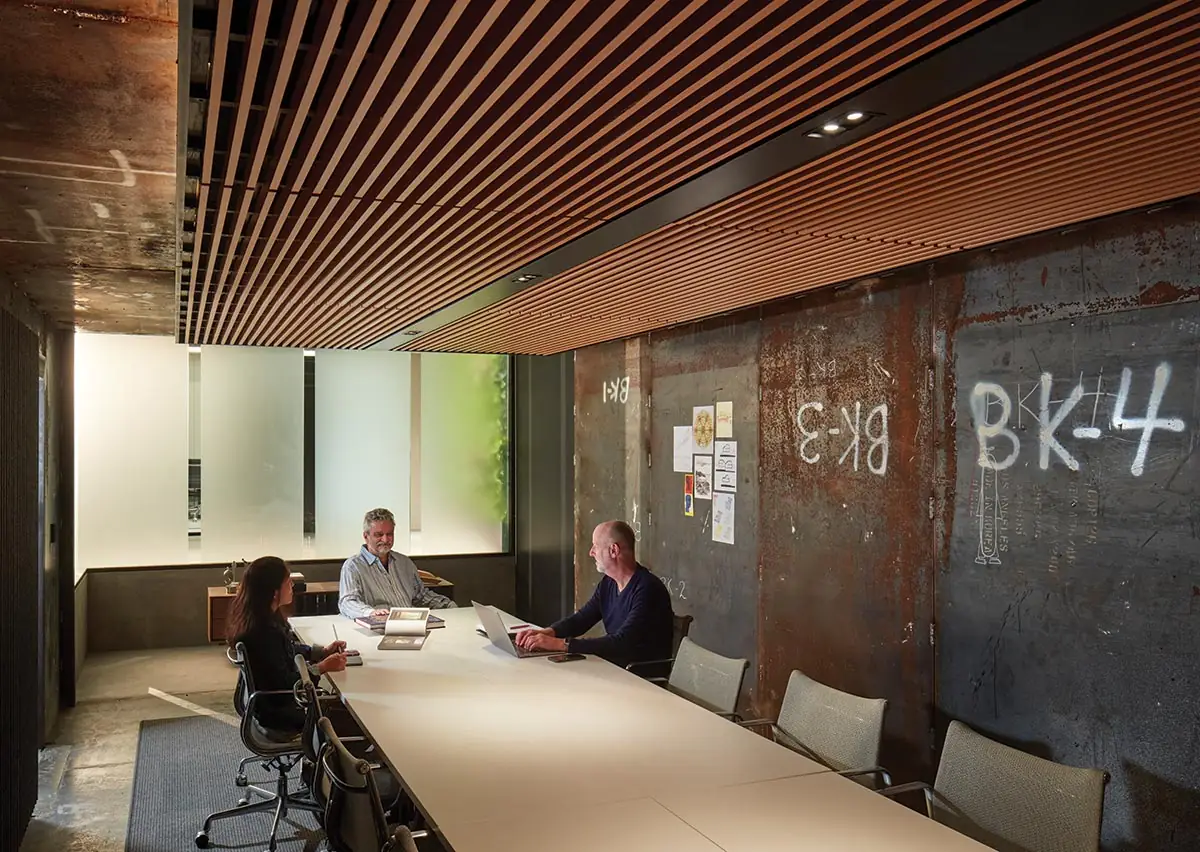
Refined offices contrast with raw, rusted steel-lined ones. Photo © Richard Barnes
Much more satisfying is the dark steel-plate stair created by San Francisco’s Lundberg Design, a rigorous passage upward to the mezzanine. The biomorphic concierge desk by the entrance, designed by Aidlin and crafted by Concreteworks, shows how sinuous and sculptural poured concrete can be. Even noise control serves the larger architectural purpose, as with the felt ceiling baffles by Turf Design that run between the structural beams and add a hint of syncopation to the central space.
The key to the center’s success will be the extent to which AIASF becomes a starting point to explore the intersection of design and urban life, through thought-provoking exhibitions or panels on issues such as housing, the public realm, and changing notions of sustainability. This is particularly true in a city where the dual impact of the pandemic and evolving work patterns has skeptics questioning downtown’s viability.
None of that is easy. But with its visibility and nimble design, the chapter’s new home is a promising start.
Click plan to enlarge
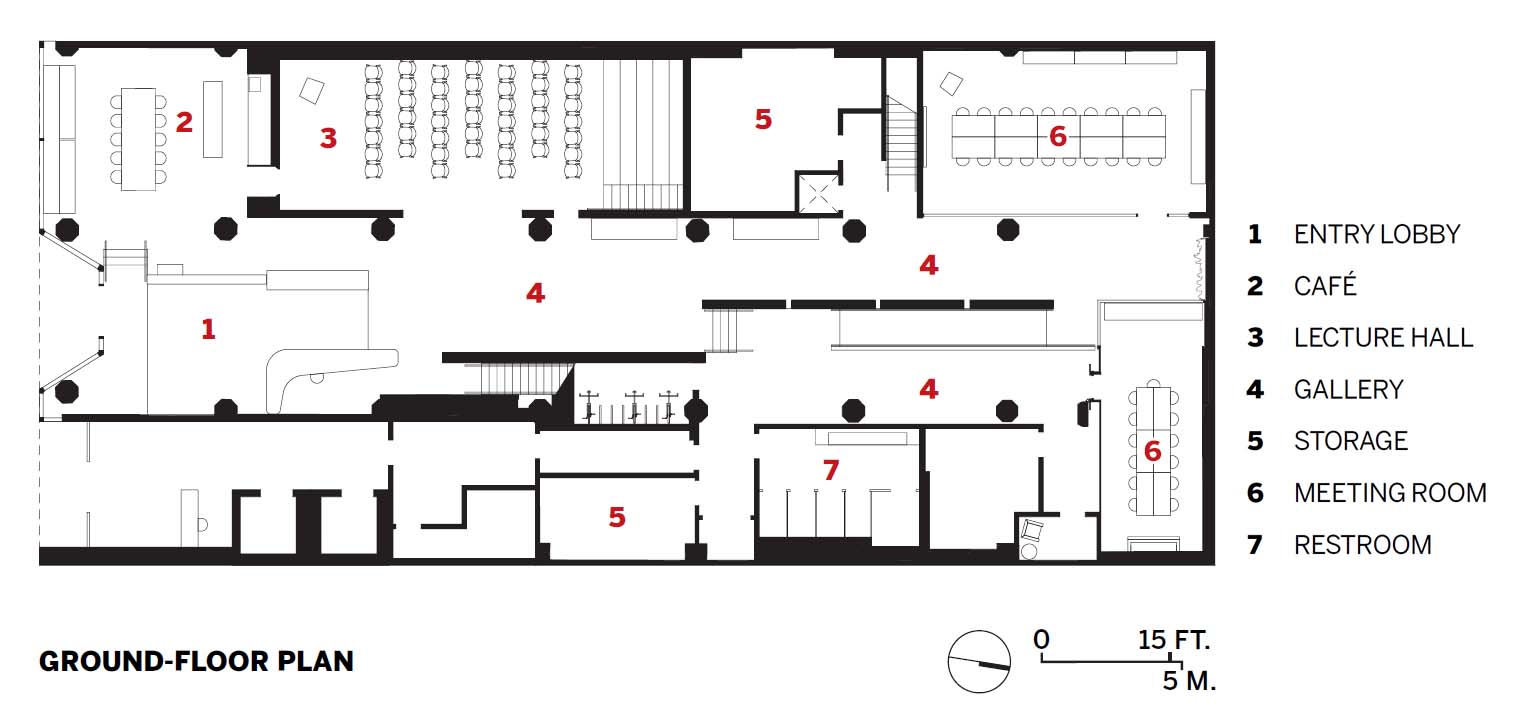
Click plan to enlarge
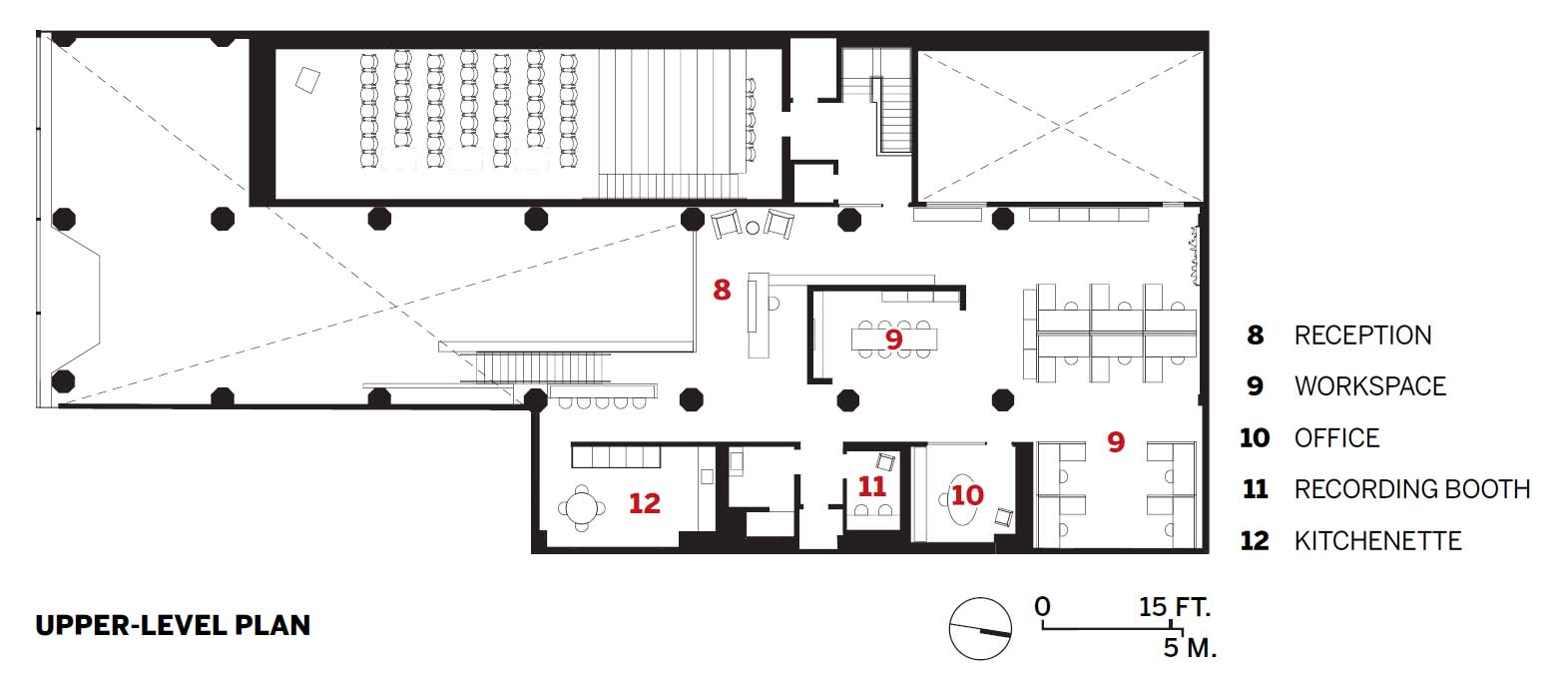
Credits
Architect:
Aidlin Darling Design — Joshua Aidlin, principal in charge; Roslyn Cole, principal and project manager
Engineers:
Murphy Burr Curry (structural); Innovative Mechanical (mechanical); Young Electric + Communications (electrical)
Consultants:
Tucci Lighting (lighting); Salter (acoustics/AV/security)
General Contractor:
BCCI Construction
Client:
AIA San Francisco and Center for Architecture + Design
Size:
10,000 square feet
Cost:
$7.5 million (total: includes $3.4 million in-kind donations); $5.6 million (construction)
Completion Date:
June 2023
Sources
Glass and Glazing:
Starphire Glass, dHive
Acoustics:
LogiSon, Rockwool, Kinetics Noise Control, Armstrong
Custom Woodwork:
Henrybuilt, Space Theory, Boxcabco, Commercial Casework
Surfaces:
Fenix, Caesarstone, Wilsonart
Living Wall:
Habitat Horticulture



